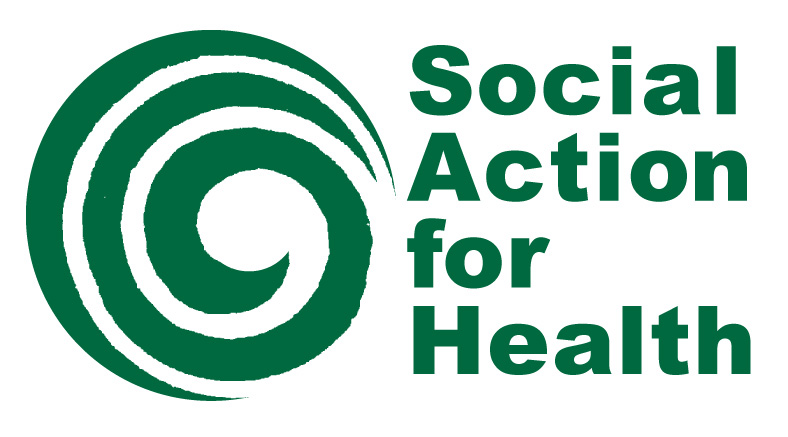Supporting people in Tower Hamlets to be a healthy weight
local insights on maintaining a healthy weight
How do people engage with weight management services?
What can community organisations do to increase engagement with weight management services?
We aimed to understand the barriers, gaps in understanding, and concerns around accessing weight management services in Tower Hamlets, and to improve access to Tier 2 and related weight management services, especially for those who are disproportionately impacted by lower support service engagement rates and COVID-19.
Our Approach
There were three stages to our research; engage, educate, and encourage.
At each stage, results were brought back to an internal working-group both for immediate application and testing of findings, and for discussions and planning for the next phase. Pivoting the activities based on our ongoing experience of the project, enabled us to put resources into activities which were more effective in terms of engagement, and trial a greater number of alternative approaches to strengthen our final recommendations.
-
The ‘Engage’ phase of this project sought to identify and understand the specific barriers faced by certain groups in Tower Hamlets who are living with obesity but not actively engaging in weight management activities.
We assessed whether the current weight management delivery model was meeting the needs of the local community and sought out recommendations for potential areas of improvement to service delivery.
The core activities in this phase were an online snap-shot poll of 80 adults residing in Tower Hamlets, followed by detailed in-depth one-to-one and focus-group conversations with members of the community, local health and wellbeing services, and other weight management providers.
-
The ‘Educate’ phase built on the insights and learnings of our ‘Engage’ phase to increase engagement with participants and partner/referral organisations.
‘Educate’ also aimed to raise awareness of the importance of a healthy weight and the support available to achieve this (including Tier 2 Weight Management courses).
This was carried out through further one-to-one phone calls and conversations with over 1600 individuals. We created and shared accessible and acceptable materials, based on participant feedback, and shared existing weight management, healthy eating and government campaigns (including the ‘Better Health’ campaign and LBTH and Public Health England messaging).
We developed a social media strategy and campaign to share key messages and increase public awareness of the importance of a healthy weight, making healthier lifestyle choices, and local weight management services.
-
The final ‘Encourage’ phase trialed some of the alternative approaches and suggestions from previous phases and we adopted a ‘test and learn’ approach to ensure robust and informed recommendations were produced through this project.
We made a concerted effort to establish peer support networks to enable participants to motivate and support one another through sharing new experiences and routines. We did this both through our networks and contacts, and through our own Tier 2 Weight Management service, Change for Good.
This meant that our approaches reached local audiences, and eligible participant groups.
Our 10 Key Recommendations
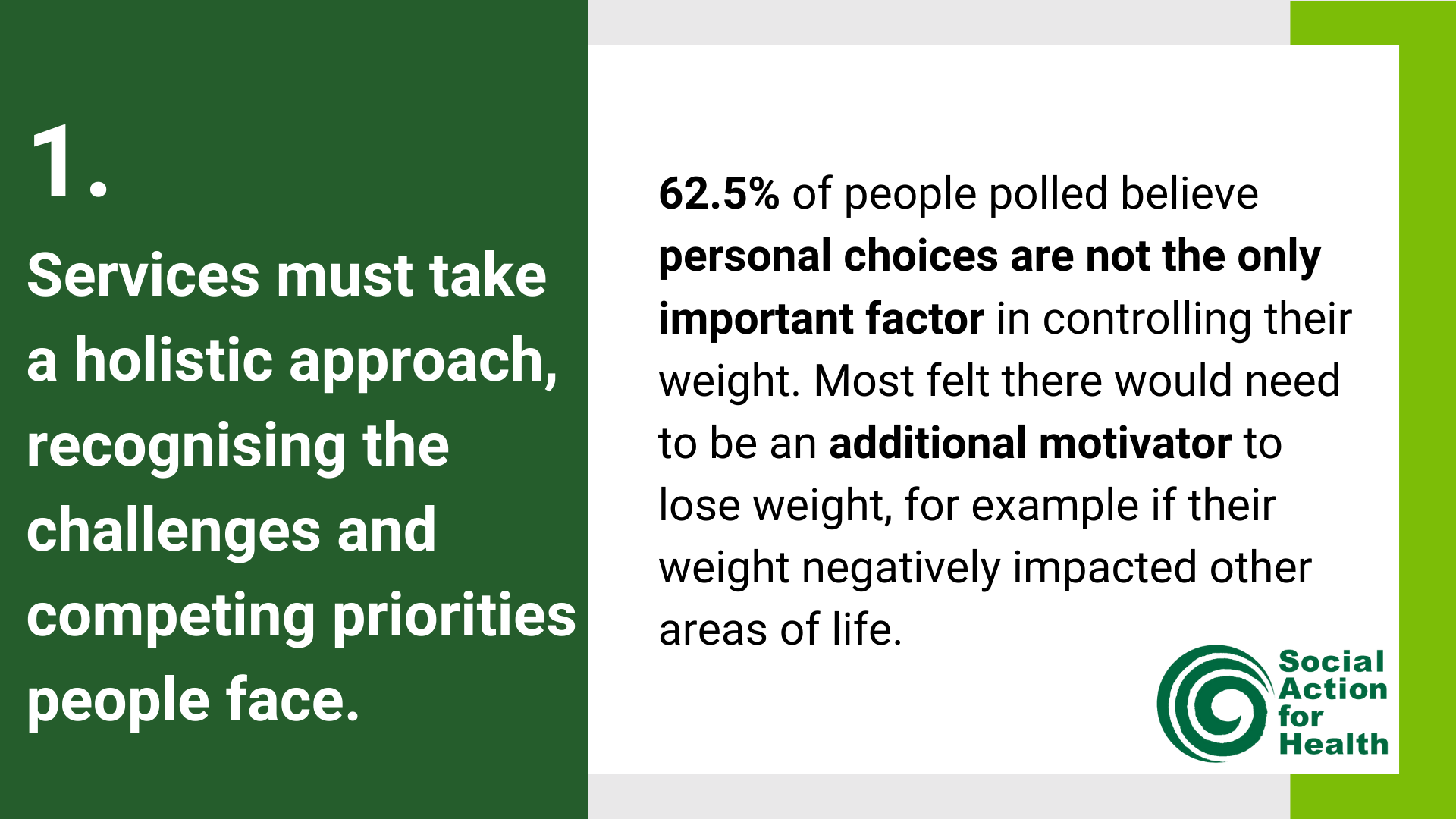

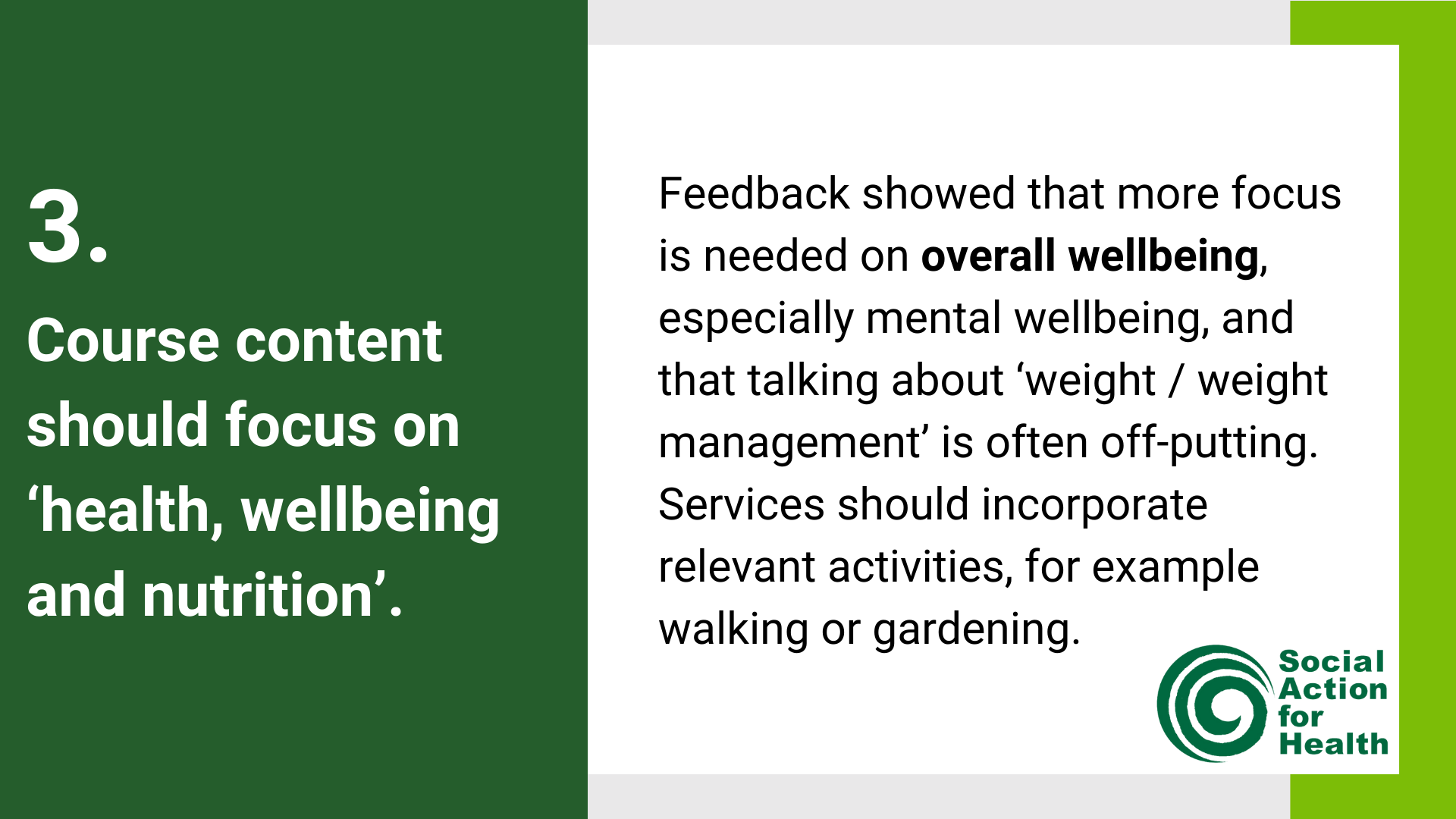
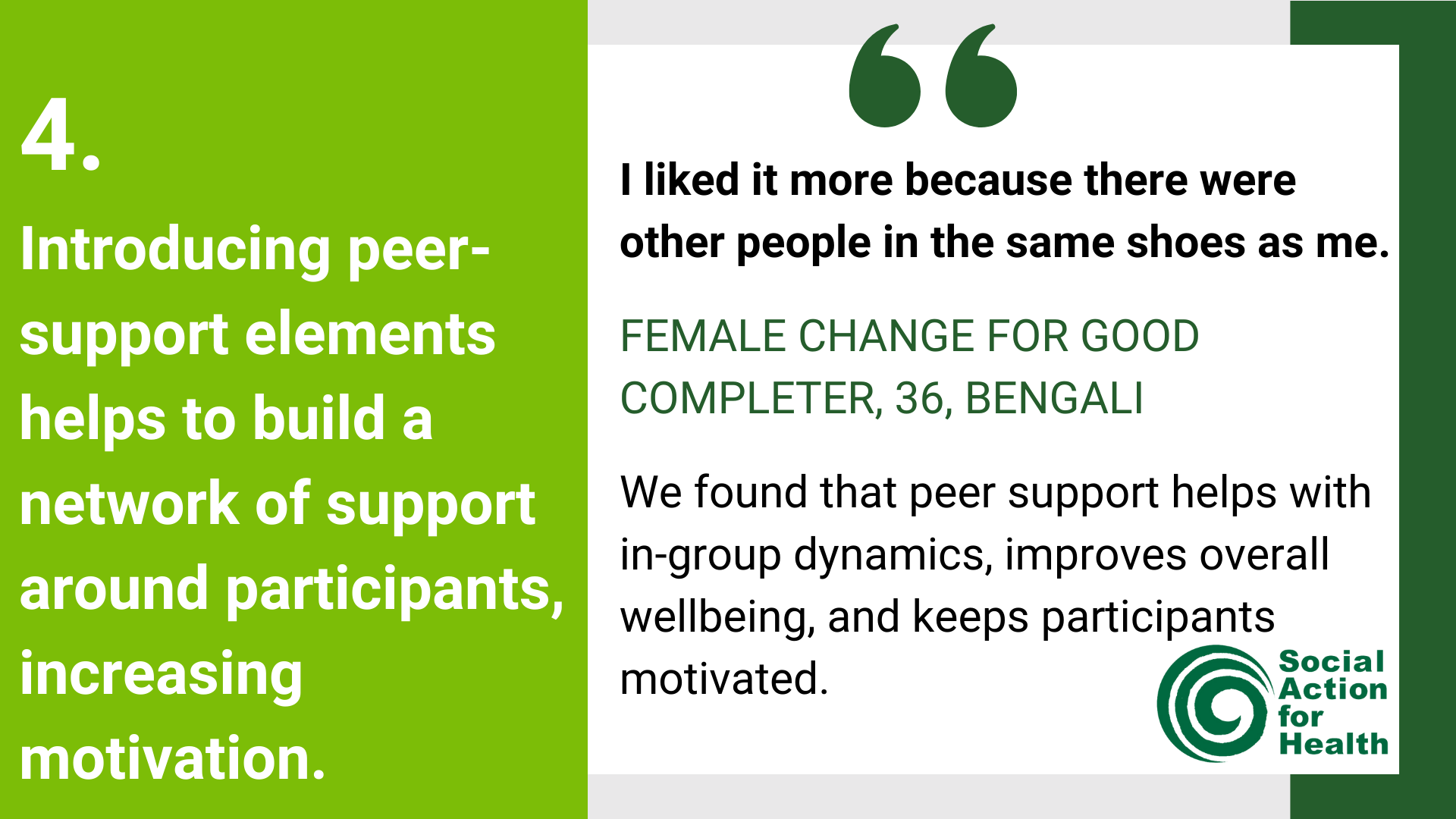
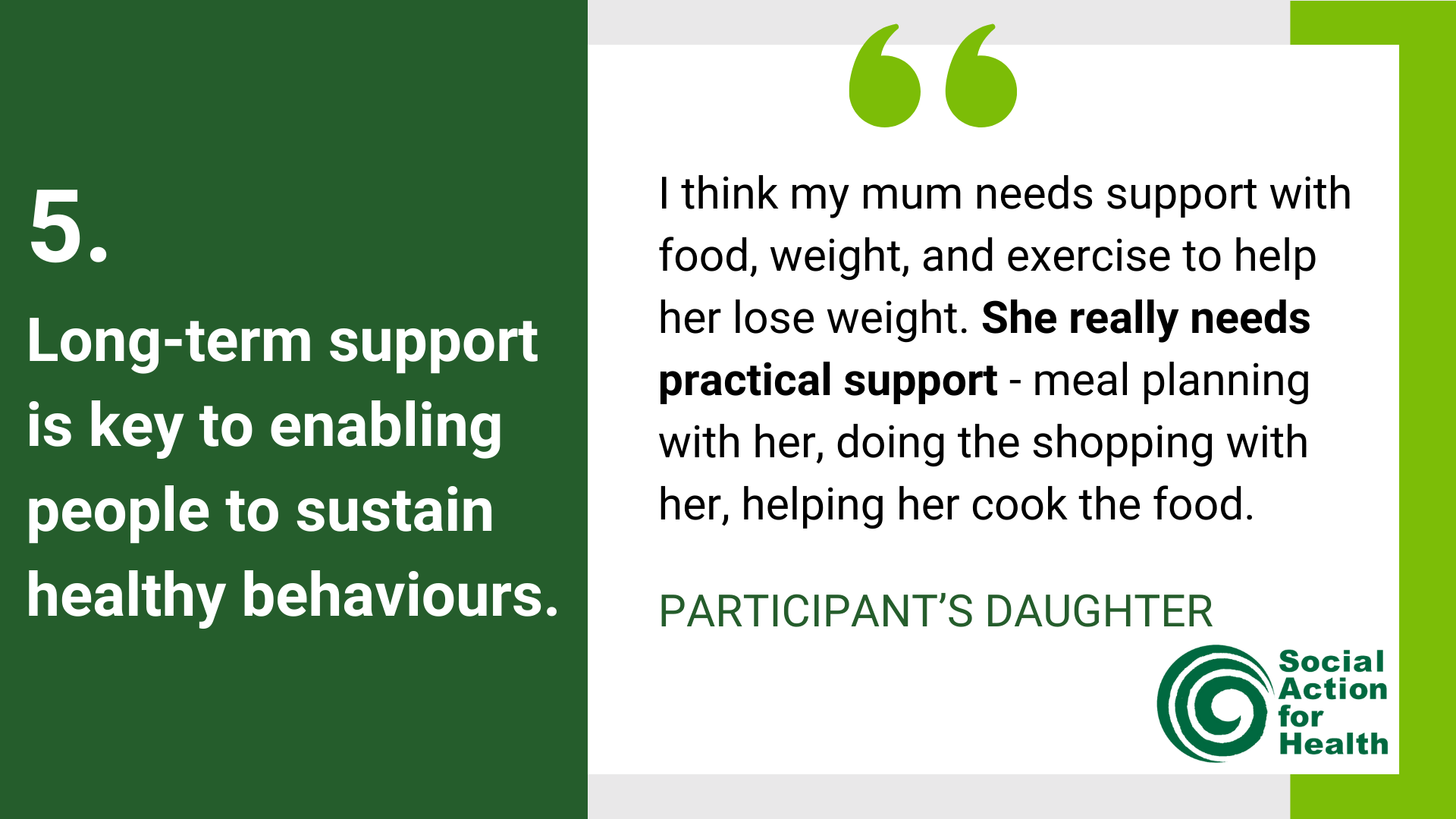
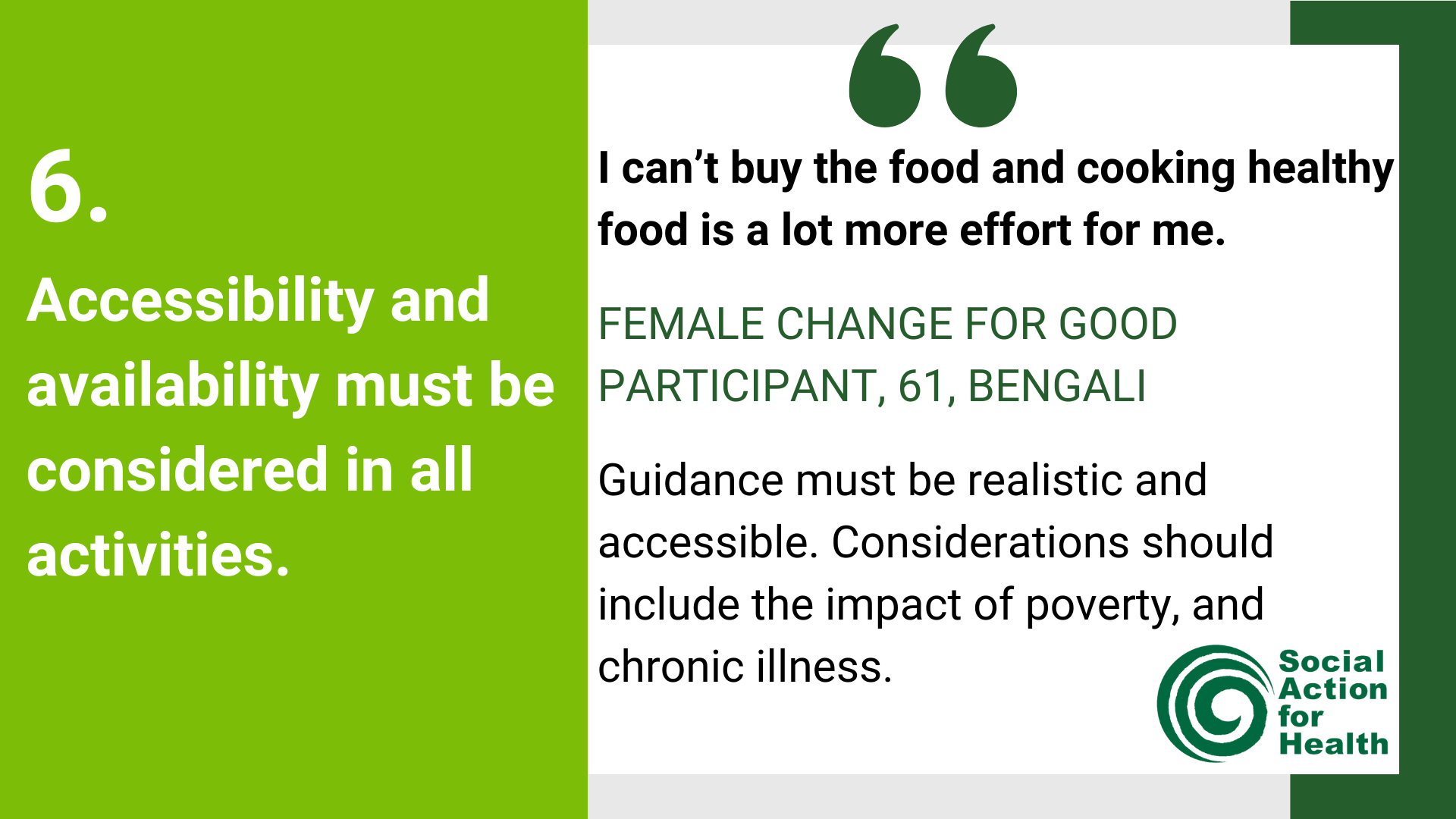
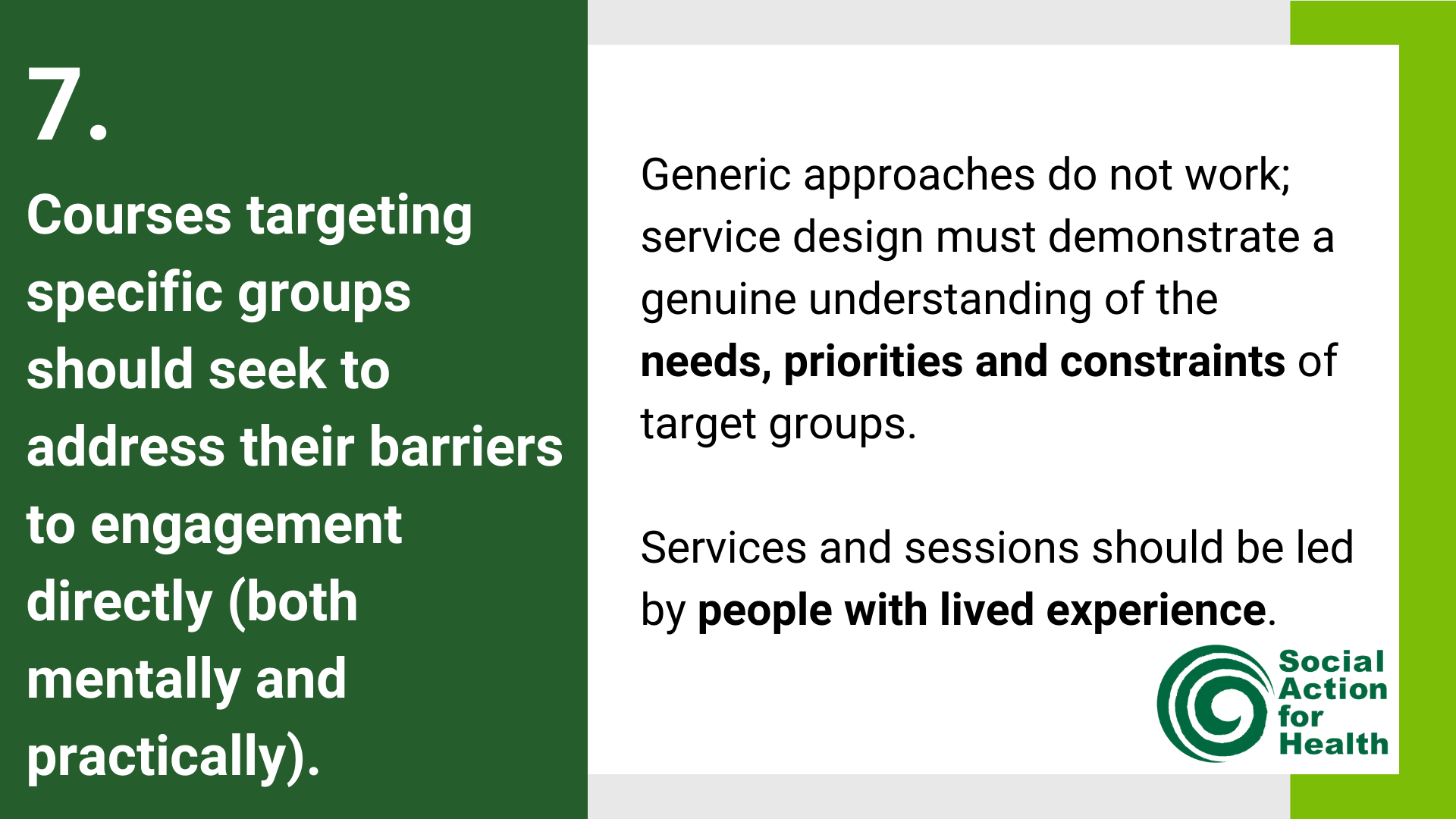
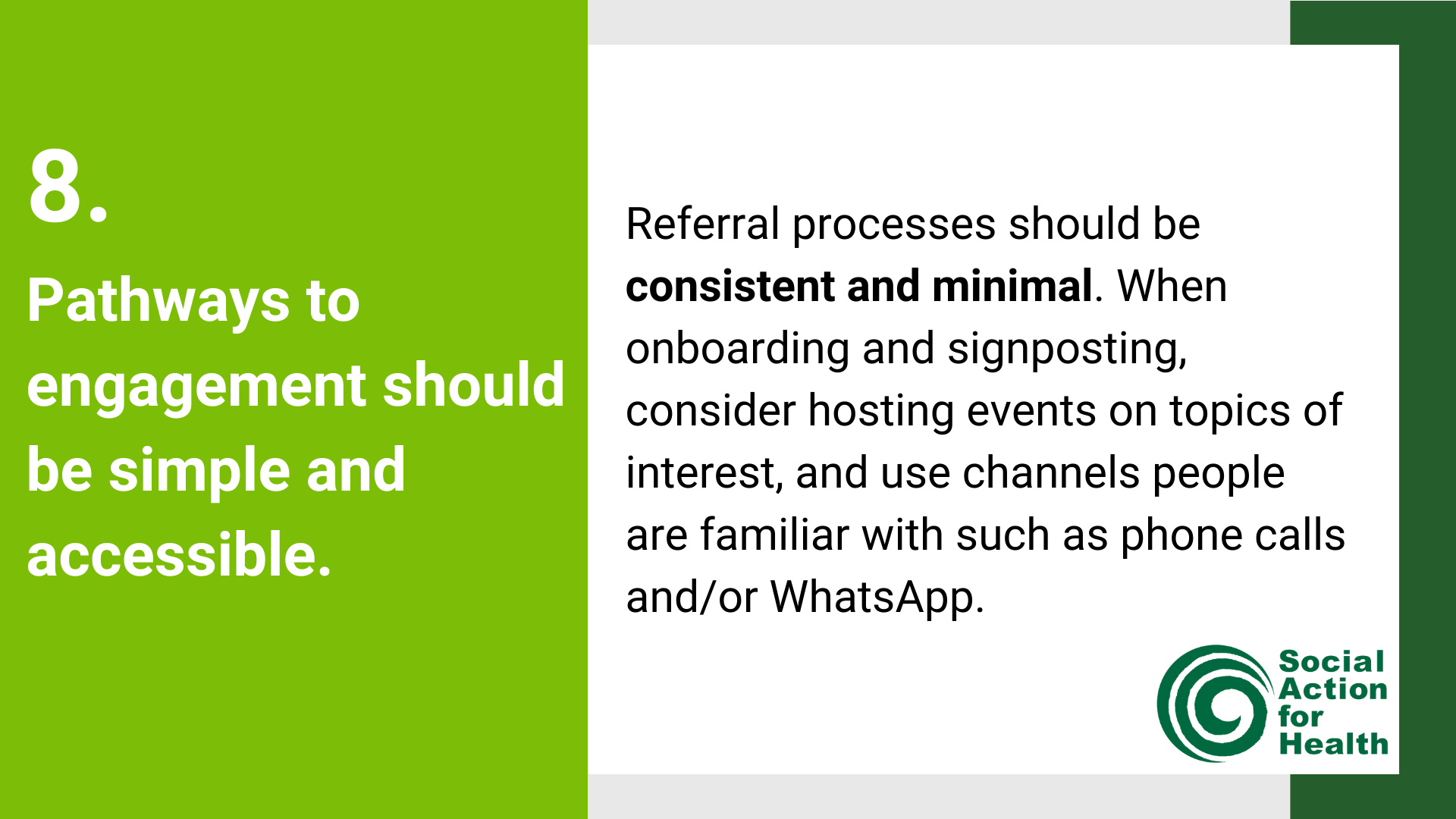
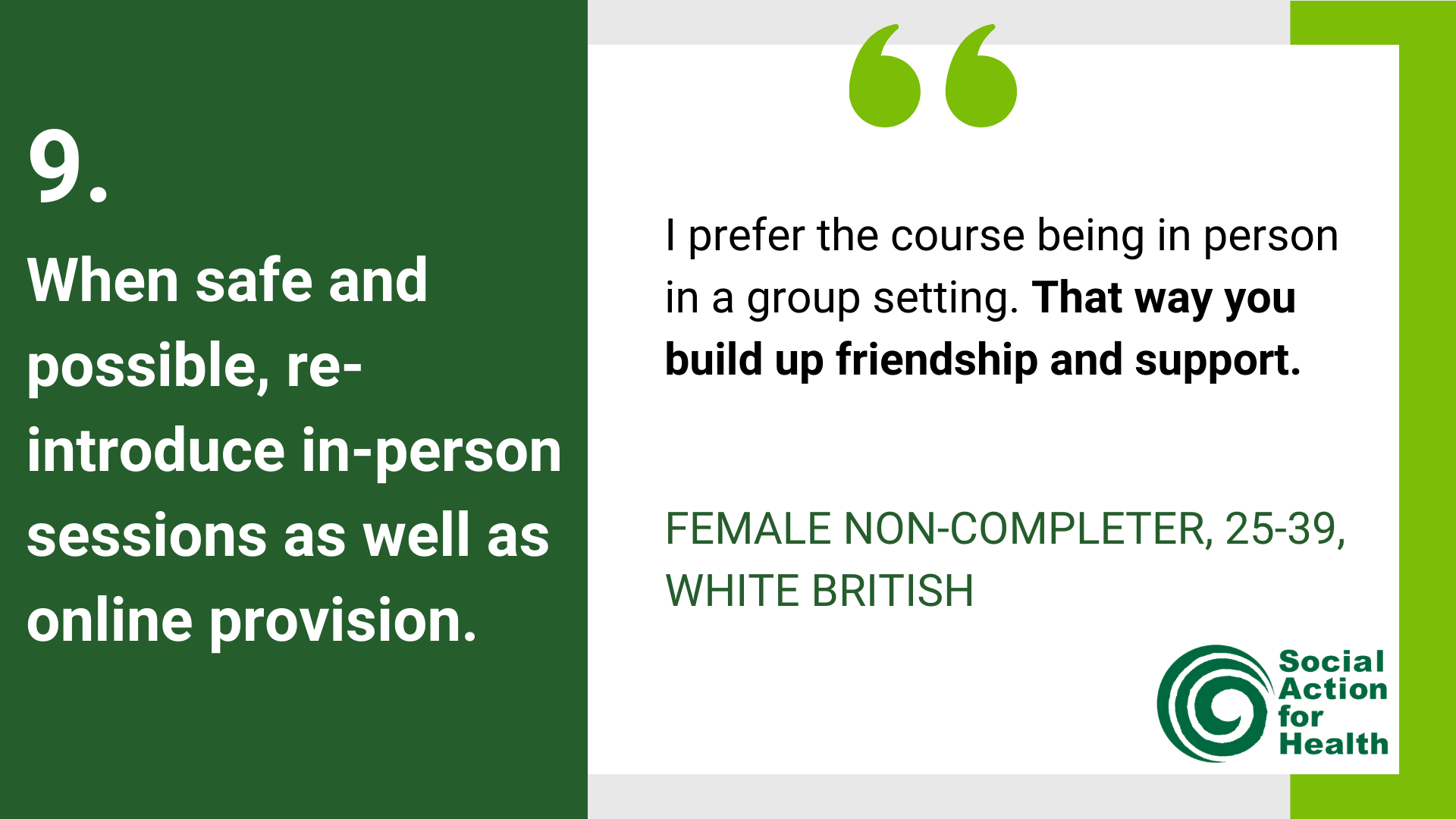
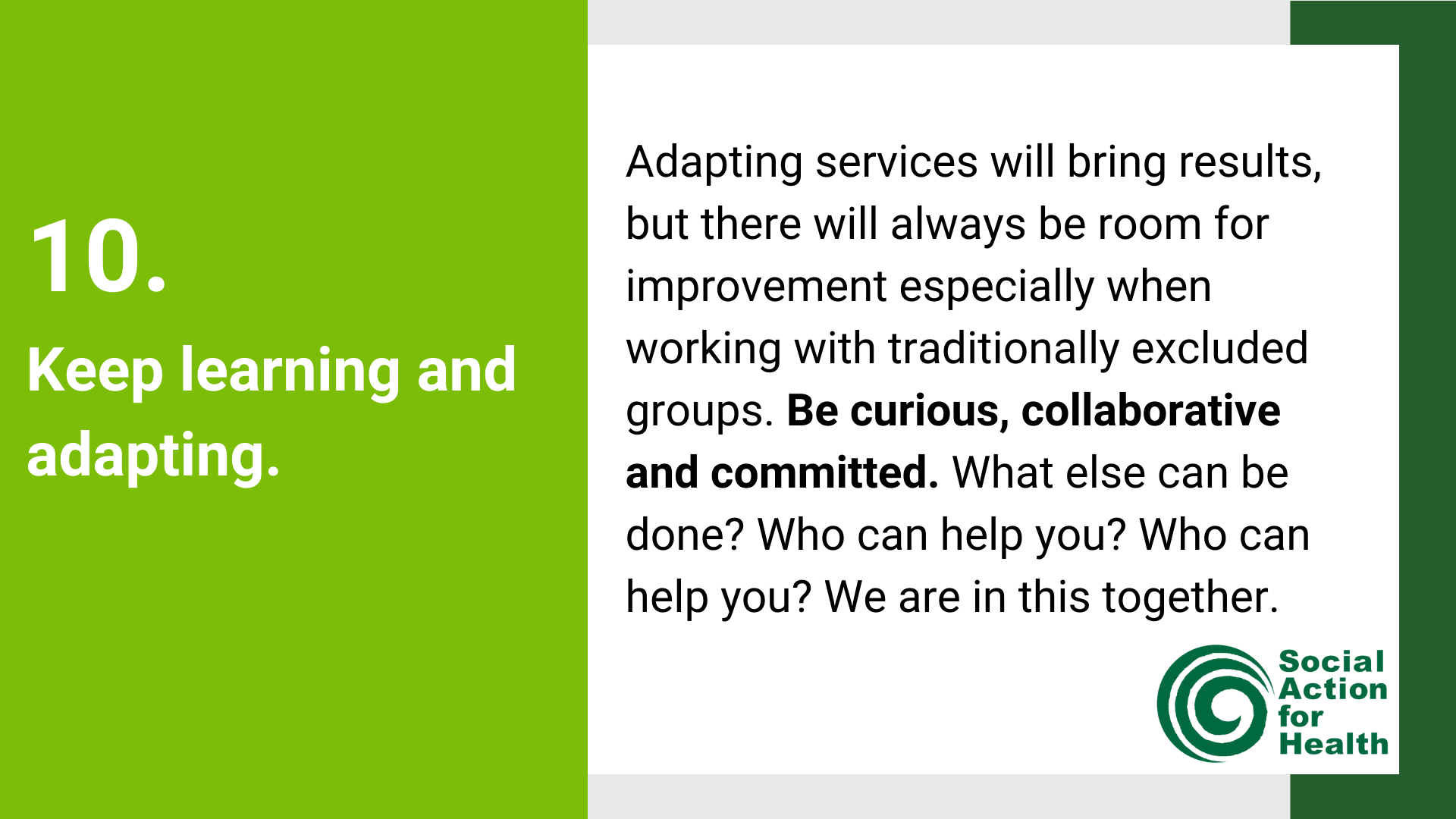
Our Insights and Recommendations
For as long as people are restricted by their circumstances - whatever they may be – we cannot assume that behaviour change is an option available to everyone.
The Public Health strategy must acknowledge that for people to choose healthy ‘options’, they must be accessible and realistic for them - this includes affordability and availability.
Addressing the symptoms - such as obesity - without addressing the root causes is not going to have a significant impact on population health.
